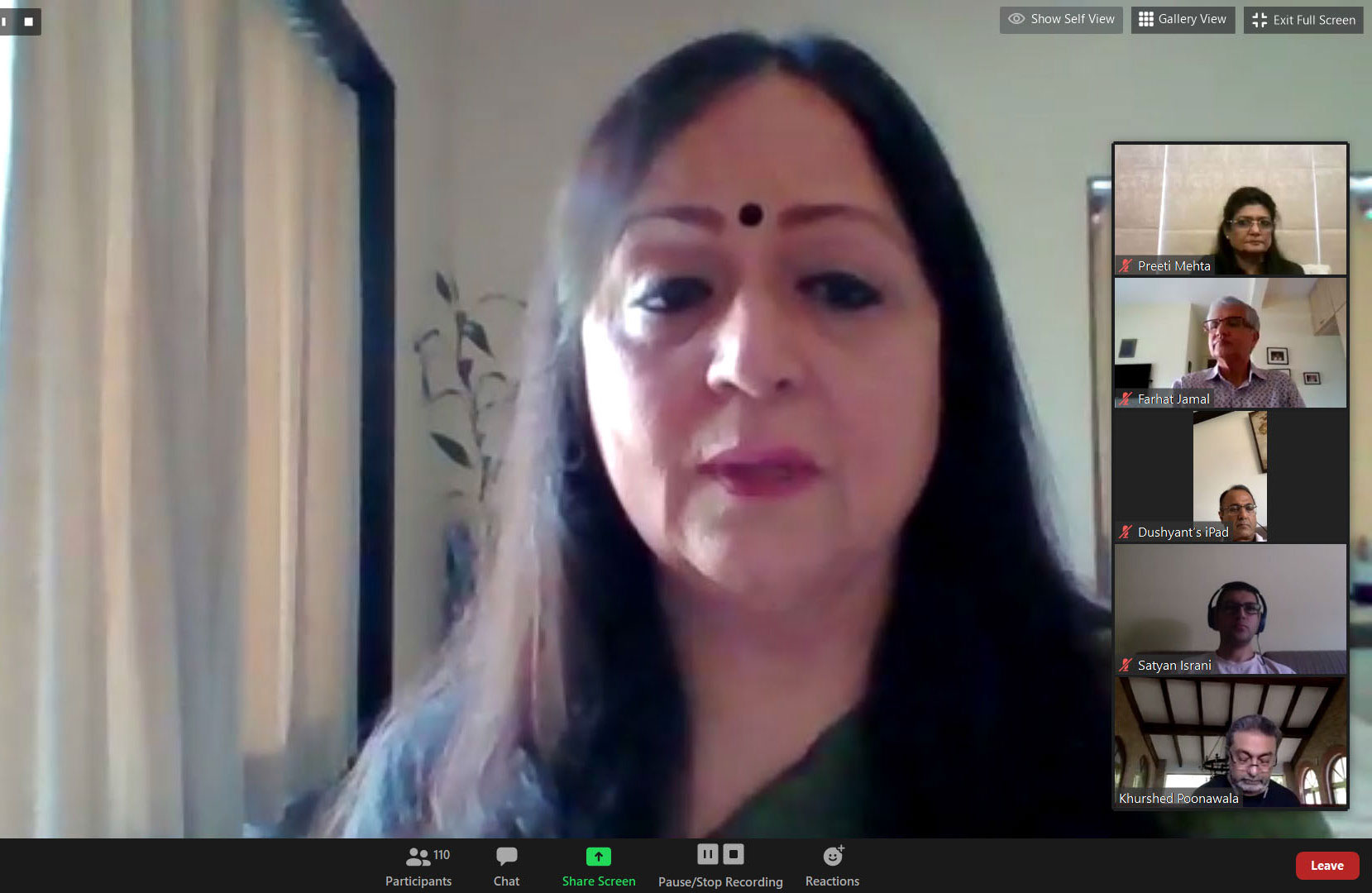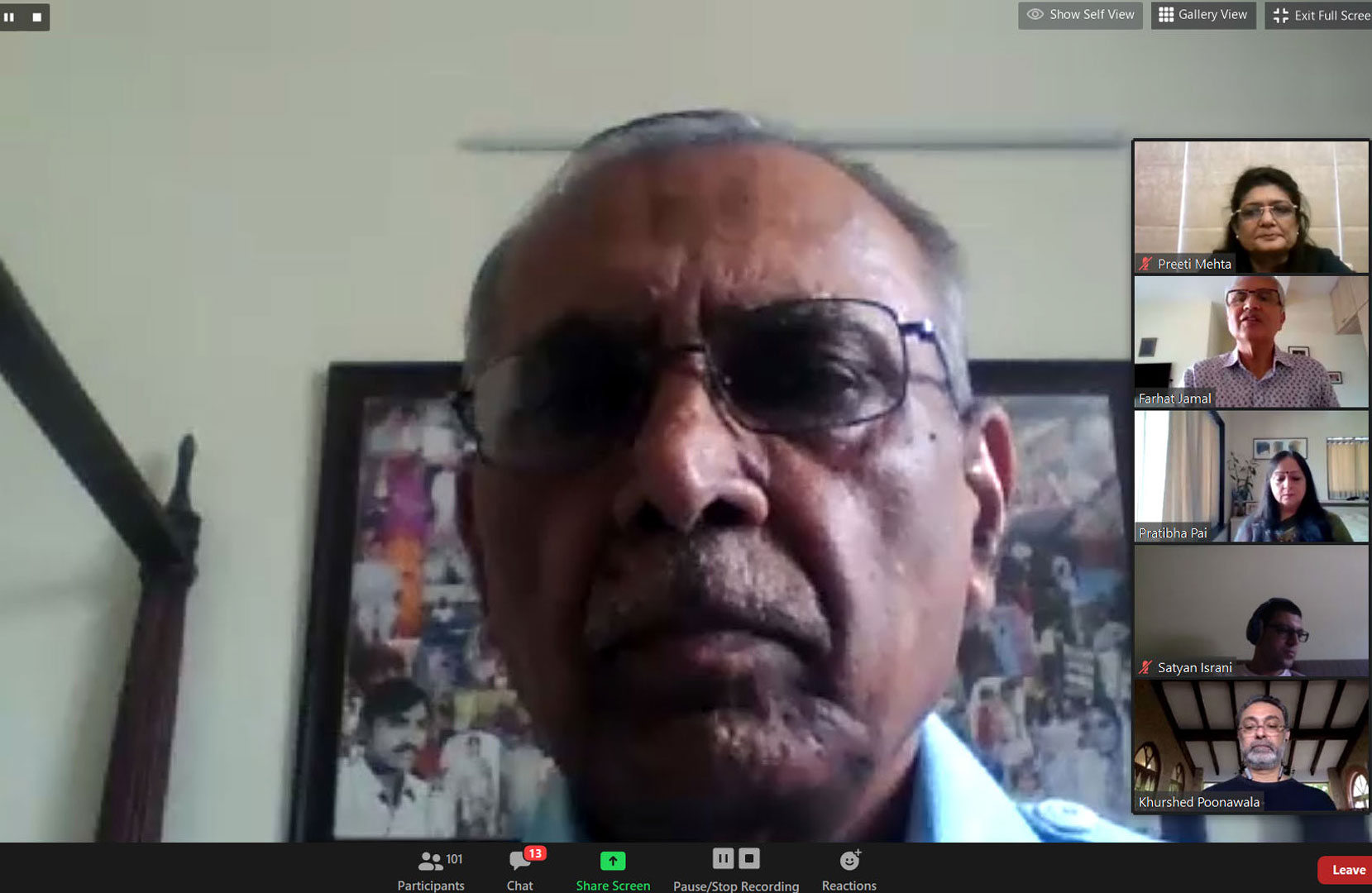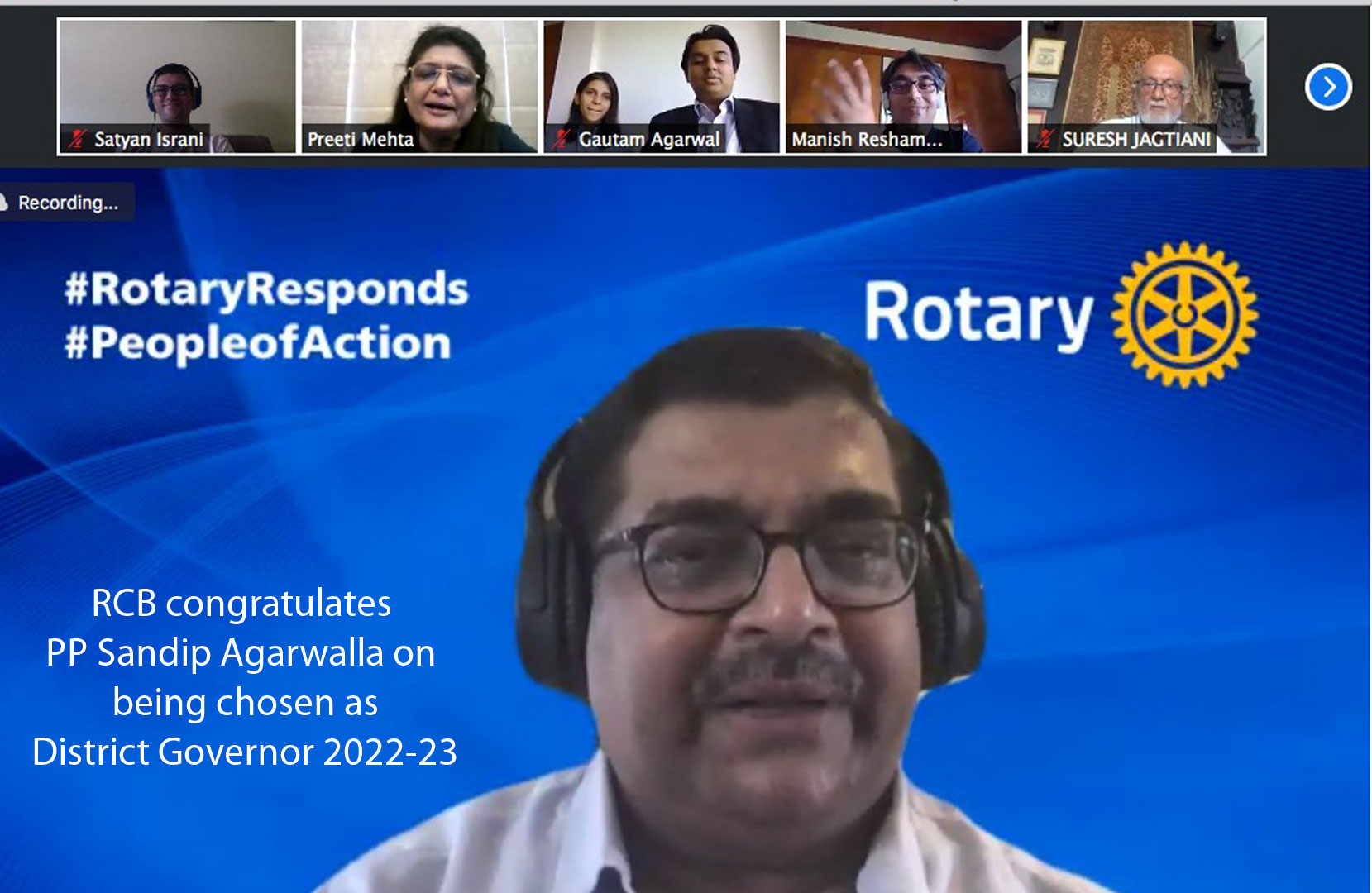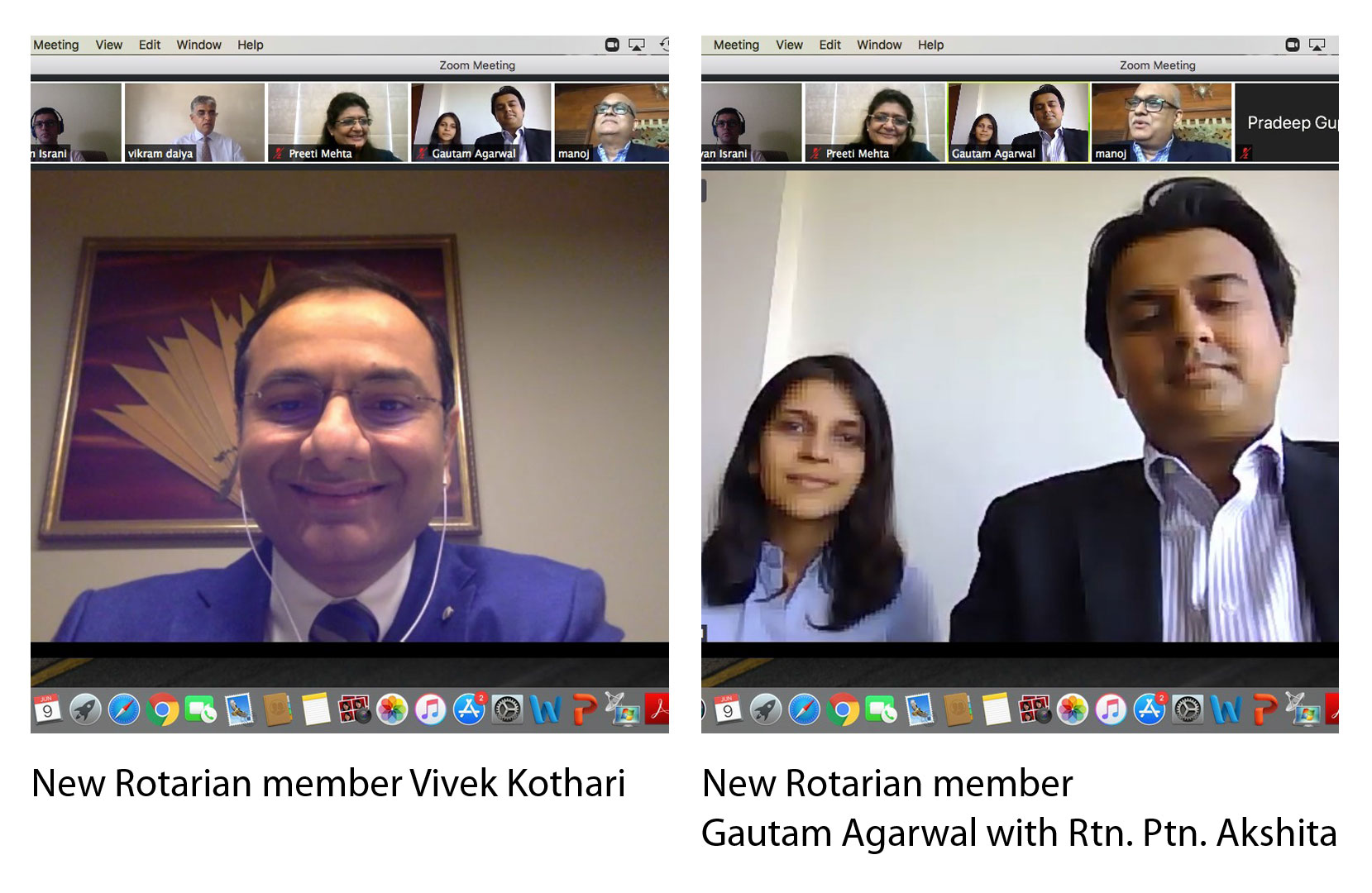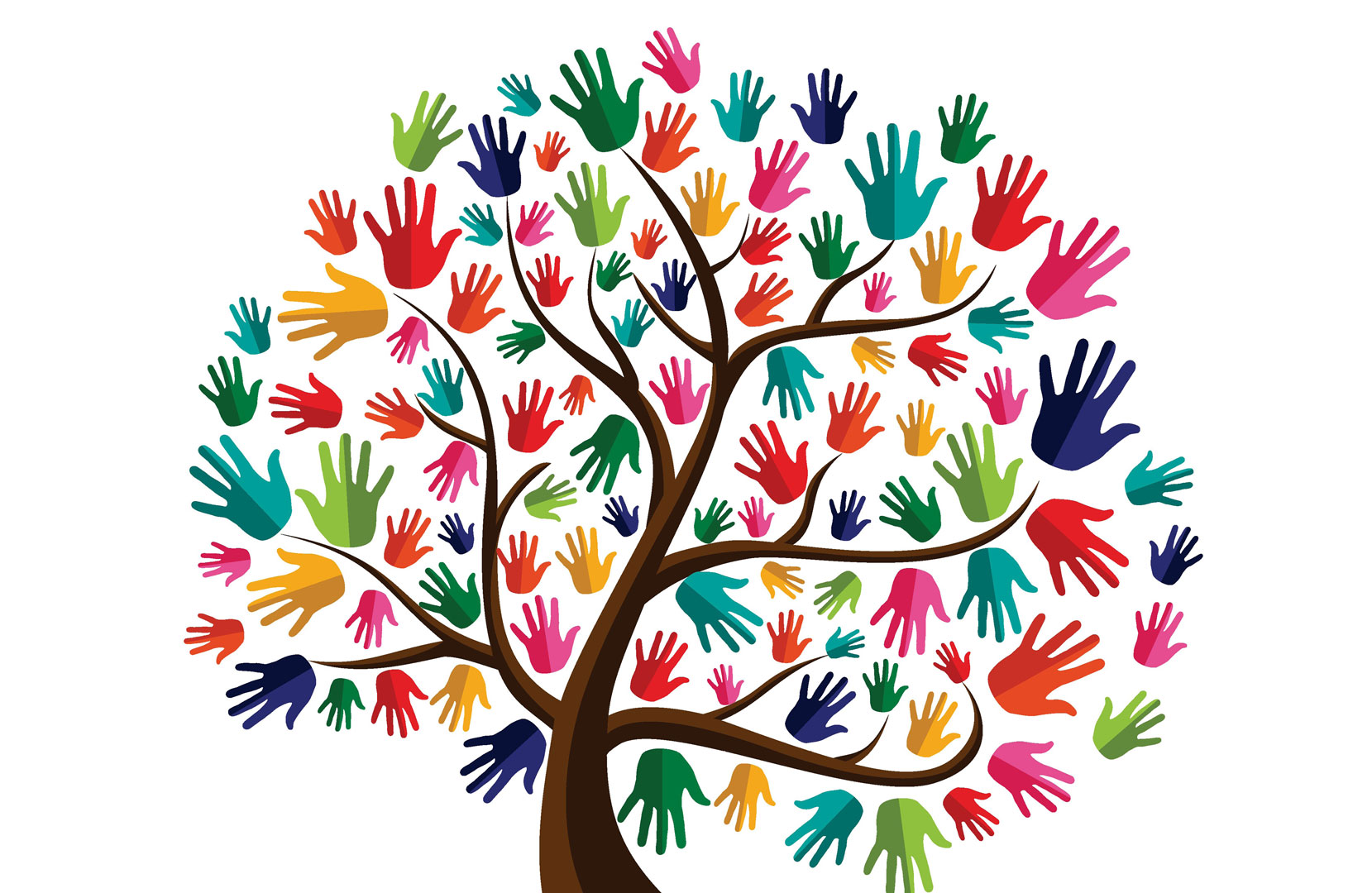
Being The Change
RCB conferred the Social Service Award to Pratibha Pai and the Sohrab Godrej Award for Science and Technology
to Dr. Laxman Singh Rathore last Tuesday
Pratibha Pai
Many Rotarians might be aware that I was involved, in my own way, in the launch of your flagship education programme Bhavishya Yaan. My BMS students of HR College were the first teachers at Bhavishya Yaan’s Worli school way before the NGO teachers took over. President Preeti, Shri Sureshbhai Kotak, Shri Arun Sanghi, thank you so much! I am deeply
honoured and grateful to be chosen as the Social Service Recipient for this year. This award is a testimony to the significance placed on the rural development and empowerment of rural economy if our nation wants to move ahead.
I want to, at the very start, salute my team, and Chirag, my partners across the state whom we worked with, my student volunteers and ambassadors across the world and, of course, my benevolent donors. Any impactful change is only because of the entire ecosystem’s efforts. These have been my heroes making my journey of spreading light and transforming life fulfilling. This award has not just humbled me but made me reflect on my journey and I’d like to share some simple steps that were instrumental in realising a better me. I would like to call it the Alchemy of Social Service, a process of transforming oneself by converting the problems we see around us into ideas that change the worlds – yours and theirs.
On this incredible journey of life:
Accept Responsibility – when you see something that is not right, take charge. Don’t engage in a blame game and
be a bystander giving advice or passing judgement. Take charge and do whatever little you can to make the world a bit better, believing, always, that no change is too small. Invest in others personally and professionally.
Embrace Change – life will throw challenges at you. Accept them, change yourself, change your perspective. When you learn to look at things differently, the things you look at will change. To me this point is timeless and in fact, today, it is timelier than ever because we are not at the cusp of change but in the thick of it.
Respect humanity in all forms – as a fellow human it is your duty to help others around you, respect humanity. Your life will be well lived when you live it for others. It will give you a sense of purpose and self-worth. Always help
those in need.
Be selflessly selfish – invest some time in helping others because it is so rewarding to yourself and exhilarating to see the results of your efforts on those in need. All it needs is compassion and empathy. I believe generosity is generative, it creates new value.
We live in a world that needs many role models for our youth to help reap the demographic dividend of our country. When you share money, time and talent with others, you may discover that the rewards are so great that you begin to share even more. That happened to me. You feel more powerful and stand taller.
Among the other charities where I volunteer my time and talent, I want to share Chirag’s story, a story of true alchemy for all stakeholders concerned. We started this project over a decade ago and I had 10 students who signed up to be agents of change.
Back then, we encouraged students of business studies to use their talents to solve real problems and bring about
sustainable change. Thanks to the support of your fellow Rotarian, Dr. Indu Shahani, the group grew rapidly and I
found that the same lessons that I had learnt were still applicable. In fact, that was the very reason I pushed some
students to do some social service during the three undergrad years.
Students accepted the responsibility in changing the lives of those living in Bharat. They suddenly realised that they had a purpose and what naturally followed was a true sense of discipline and passion to be the change that was required. They put together their minds to plan out every detail from grassroot to vendors, to fundraising techniques and impeccable logistic arrangements.
They improved their communication skills, learned working in teams, took charge of their life and took responsibility for their decisions and actions. I saw an intrinsic motivation without expectation of money, marks, or attendance credits.
To reinforce this process of alchemy I would like to share a small example of Pawan, from Ulhasnagar, who got into the college in the Sindhi quota. He was not the brightest in the class, a middle-class boy, who was very shy, lacked exposure, but loved giving back to the society. He was engaged in all our social initiatives and I found that when he was involved with the community, he forgot that he was shy.
A year later when Google came on the campus, he, like many of his batchmates, applied for the placement process. He made it through the psychometric test and was among 12 shortlisted students for personal interviews. I was told by the Google HR team that it was 10 minutes per student and by 2 o’clock they would be in my office for lunch.
I ordered lunch at 2 o’clock, but even by 2.30, 2.45 there was no sign of them. I panicked and ran into the conference room to see what was happening. The security outside told me that all the kids had been let out in 10 minutes but poor Pawan was being grilled for the for the last hour and a quarter.
Soon the door opened and Pawan walked out absolutely starry-eyed and telling me very happily that all they were talking about was their involvement in Chirag. I am so happy to share that he was the only student recruited by Google. Today, he has a team at Google San Francisco, he still hasn’t lost his humility, and grounding and is always willing to come back when asked for a village trip. When I saw this transformation in students as a result of working
in a social space, we at Chirag decided to start Chirag chapters at various colleges.
That brings me to another story of Dhruv Raj Bhartiya, of Jamnabai Narsee school. Since class eight, Dhruvraj had been coming with us on village visits as part of the Chirag project. We had a video on one of the trips to Assam and we put it up on YouTube as part of our process. Apparently, his involvement was a turning point in his favour at the University of Chicago from where he graduates this month. Children of some Rotarians have also similarly benefited and as for me, words cannot describe the sense of fulfillment I receive from seeing the change in the beneficiaries, of course, the benefactors and myself.
The RCB supports such outstanding projects and yet I am not sure that many of you have seen all your own projects. I’d urge you to visit them regularly, you will have an uplifting experience. We noted that whether it is philanthropy, acts of kindness, paying it forward, or any good deeds, they are all so powerful. It is probably why every culture and religion values and awards performance of good deeds.
There are many benefits resulting from good deeds, some of them obvious while some of them you may not have considered. For example, I know that the Rotary has given meals during the Covid-19, so the homeless person, street child may now have some food to eat thanks to your generosity. However, child has received more than just a meal or two. He has received a message that he is important and worth helping. This good deed warms his heart while it fills his stomach and it also warms your heart and makes you feel good. Thus, you cannot lift others without uplifting yourself.
Our job as seniors and mentors is to guide the youth and young at heart through the spirit of social service, mould them in the process of hard work and continuous learning to emerge through this process of alchemy. Through social service you become a better human being and the world becomes a better place.
Dr. Laxman Singh Rathore
This is the second time I have been invited by the Rotary Club, the first being in 1984 when I returned from a successful Indian scientific expedition to Antarctica to set up Gangotri, the first Indian basecamp on frozen land. Thank you for inviting me today and for this recognition which will energise me to continue my work.
Many of the climatic changes that we have observed since 1950s have been unprecedented in millennia. Temperatures in atmospheric pressure and oceans are significantly warm. We have seen the reduction of ice caps on mother earth. We have seen rising sea levels and all of this is due to the concentration of greenhouse gases which are increasing day by day.
Climate change is nothing new. When Earth detached from the sun, its temperature was 6000° Calvin and subsequently it cooled off to today’s 270° Calvin. It has varied from Ice Ages’ glacial period to the periods of now where the ice sheets are largely confined to the Antarctica, Greenland, Arctic etc. Records indicate that the climate change occurred over the last two million years. It has been occurring since its genesis, but we had handled it fairly good in last two million years. It has occurred in a cyclic manner, with glacial periods lasting about one lakh years, inter-glacial for 10,000 years. The changes were gradual, in terms of temperature, less than a degree per thousand years.
In the recent past, changes are faster and manmade. We have found close linkage of concentration of carbon dioxide in the atmosphere and temperature. When we analysed and did coal sampling to synthesise the concentration of carbon dioxide as well as temperature on the Russian station on Antarctica, a close relationship was found. The concentration of carbon dioxide has been veering between 180 parts to about 300 parts per million. When the concentration is higher, the temperature is also higher while when the concentration decreases, temperature decreases.
The presence of carbon dioxide has been rapidly increasing since the industrial revolution. It is postulated that it will increase to 440 ppm by 2040. The carbon dioxide level is going to stabilize at some level but a lot of warming is likely to occur by then and that is why we need to respond to climate change.
We also know that there is nothing on this earth that is not affected by the weather and the climate. In this pandemic, we have also tried to understand how pests and diseases are going to change in variation with temperature. They have a close relation to climate change. The variability in the climate can be natural as well as manmade; the natural is caused by primary factors – emission of sun energy, orbital position of earth in relation to sun as the amount of radiation also varies and then comes the volcanic eruption.
When we look at past changes, we have direct measurement, remote sensoring and period climatic reconstruction. Greenhouses are the culprit but not just carbon dioxide. There are other gases like methane, hydrofluorocarbons, etc. These gases have long life cycles and their warming potential is much higher than carbon dioxide.
With business activities at ongoing levels, we can predict warming of the climate upward of two to three degree Celsius in the coming years which will be very challenging. It will have severe effects on agriculture, health and water. Therefore, we need to build a resilient mechanism and for that nationally as well as internationally efforts are on.
The Indian government has allocated Rs 3500 million for rural as well as urban sectors to develop 100 resilient cities as far as climate is concerned. In nutshell, after the Paris Agreement of 2015, different governments committed to reduce emission intensity by 33 to 35 per cent by 2030 and achieve about 40 per cent cumulative electric power installed capacity from non-fossil fuel-based resources and create an additional carbon sink of about 3 billion tonne through additional forest cover and tree cover by 2030.
I am happy to mention, the Government of India has achieved this task by 2020.

